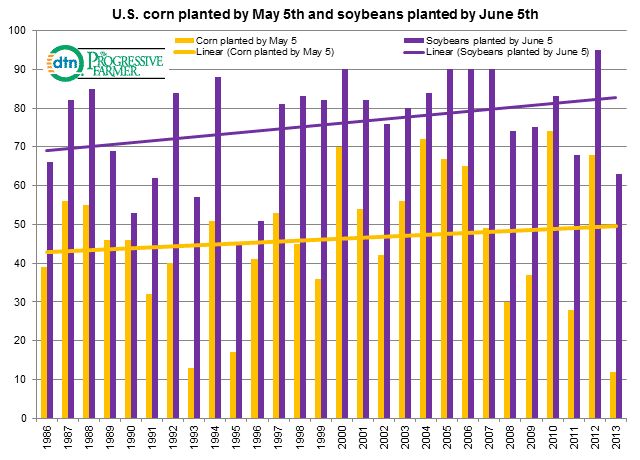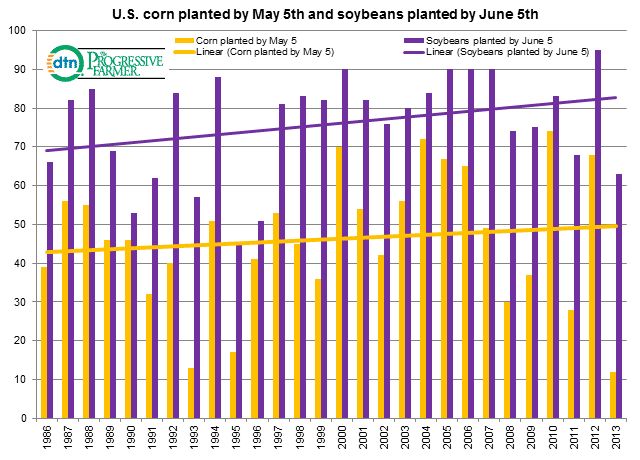Fundamentally Speaking
Corn Plantings, Soybean Seedings
RecentlyNOAA indicated there exists a moderate spring flood risk in much of the Midwest due to above average snowpack and deep layers of frozen soil, symptoms of this year’s brutal winter called one of the worst in years.
Areas of MI, WI, IL, IN, and IA are most at risk along with surrounding areas of MO and KS.
Added to this risk area is the Red River Valley between MN and ND that in recent seasons has become an annual event.
P[L1] D[0x0] M[300x250] OOP[F] ADUNIT[] T[]
This raises the possibility that for the second year in a row, U.S. corn and soybeans could experience delayed or in some cases lost plantings.
NOAA’s spring forecast for below normal temperatures from Montana eastward across the Northern Plains to the Great Lakes region adds to the likelihood of late seedings.
The accompanying graphic shows since 1986 the percent of the U.S. corn crop planted by May 5 and the percent of U.S. soybean seeded by June 5.
The chart shows 2013 corn plantings by May 5 at a mere 12%, the lowest ever for that date whole soybean seedings by June 5 were 63%, the lowest for that date since 1996.
The net result was millions of acres of intended area for both not planted with the tardy seeding pace contributing to below trend yields for each.
The prospect of delayed plantings has lifted the prices of new crop corn and soybeans respectively 14% and 10% from their January lows.
This actually may result in higher intended acreage than the USDA estimated last month at their annual Ag Outlook Forum though as usual Mother Nature will have final say as to how much and when the crops do get in the ground.
(KA)






Comments
To comment, please Log In or Join our Community .